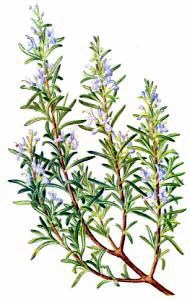Beth Trissel's Blog, page 44
November 25, 2013
‘Tis the Season for Rosemary
 “There’s rosemary that’s for remembrance. Pray, you love, remember.” ~ Hamlet
“There’s rosemary that’s for remembrance. Pray, you love, remember.” ~ Hamlet
Rosemary is one of my favorite herbs, mostly just because. I rarely cook with it, but love its scent and the wealth of history behind it. Known as the herb of remembrance from the time of ancient Greece, it appears in that immoral verse by Shakespeare. My fascination with herbs plays a major role in my ghostly murder mystery romance novel Somewhere My Love, as does Hamlet, for that matter. I always wanted to write a murder mystery with a focus on herbs and parallels to a Shakespearean play, and so I did.
A Modern Herbal by Maud Grieve, a wonderful source of herbal lore as well as practical information on the medicinal uses and growing requirements for a myriad of plants, is an invaluable guide. I have volumes one and two of Ms. Grieve’s work and can easily lose myself in their pages. She refers to her herbal as modern, and in comparison to the ancient herbalists it is, but A Modern Herbal is charmingly quaint and published in the early 20th century.
The Ancients were well acquainted with the shrub, which had a reputation for strengthening the memory. On this account it became the emblem of fidelity for lovers. It holds a special position among herbs from the symbolism attached to it. Not only was it used at weddings, but also at funerals, for decking churches and banqueting halls at festivals, as incense in religious ceremonies, and in magical spells.
At weddings, it was entwined in the wreath worn by the bride, being first dipped into scented water. Anne of Cleves, we are told, wore such a wreath at her wedding. A Rosemary branch, richly gilded and tied with silken ribands of all colours, was also presented to wedding guests, as a symbol of love and loyalty. Together with an orange stuck with cloves it was given as a New Year‘s gift…
In early times, Rosemary was freely cultivated in kitchen gardens and came to represent the dominant influence of the house mistress ‘Where Rosemary flourished, the woman ruled.’
The Treasury of Botany says: ‘There is a vulgar belief in Gloucestershire and other counties, that Rosemary will not grow well unless where the mistress is “master”; and so touchy are some of the lords of creation upon this point, that we have more than once had reason to suspect them of privately injuring a growing rosemary in order to destroy this evidence of their want of authority.’ (Meanie heads.)
 Rosemary was one of the cordial herbs used to flavour ale and wine. It was also used in Christmas decoration.
Rosemary was one of the cordial herbs used to flavour ale and wine. It was also used in Christmas decoration.
“Down with the rosemary and so,
Down with the baies and mistletoe,
Down with the holly, ivie all
Wherewith ye deck the Christmas Hall.”—HERRICK.
Although an herb, rosemary is often shaped into lovely miniature Christmas trees. The plant is well suited for this purpose as its essential oils produce a scent similar to pine trees and it has a natural evergreen shape and needle-like leaves.
If you purchase a rosemary plant whether as a Christmas tree or for your indoor herb garden, remember it needs good light and moderate watering. Allow the soil to dry before re-watering to avoid root rot. The most common cause of death for potted rosemary is over watering. In spring transfer your rosemary to a clay pot. The clay will help wick excess water out of the soil. Fertilize monthly to maintain health. To this advice I add that you can also kill them by allowing the plant to dry out, so don’t do that either.
Because rosemary is native to the hot, dry hills of the Mediterranean, growing it indoors can be a problem. You may find you get more dense vigorous growth if it is kept outside during most of the year. Trim the plant periodically to preserve the Christmas tree shape.~
Filed under: Uncategorized Tagged: Christmas decorating, Christmas tree, ghostly romance novel, Herb, Kitchen garden, old fashioned Christmas, Plant, Rosemary, rosemary Christmas tree


November 23, 2013
Early American Christmas Cards and My Colonial Christmas Romance
 Ever wonder about the history of Christmas Cards in America? Here’s what I found.
Ever wonder about the history of Christmas Cards in America? Here’s what I found.
From Something Olde: Christmas Card History
“In the late 1700’s merchants sent their customers best wishes for the new year. The cards were created on lithographs and hand-colored. A lithograph is an etching on a stone that can be reproduced on paper. Sending Christmas cards first became popular in England over 150 years ago. In the 1840’s John Calcott Horsely was a curator at the royal museum. He was late sending his usual holiday letters to his friends and relatives for Christmas. He asked the artist, Sir Henry Cole, to design and hand-color 1,000 cards. He wanted the card to show people being fed and clothed to remind his friends of the needs of the poor during this season.”
 From The Old Farmer’s Almanac:
From The Old Farmer’s Almanac:
Holiday Cards
The first American to print and sell Christmas cards was Louis Prang of Roxbury, Massachusetts, who began publishing cards in 1875.
(In 1953) President Dwight D. Eisenhower is given credit for sending the first “official” Christmas card from the White House. An art print also became the standard Christmas gift for the president’s staff, a practice continued to this day.
 From Idea Finder: “A relatively recent phenomenon, the sending of commercially printed Christmas cards originated in London in 1843. Previously, people had exchanged handwritten holiday greetings. First in person. Then via post. By 1822, homemade Christmas cards had become the bane of the U.S. postal system. That year, the Superintendent of Mails in Washington, D.C., complained of the need to hire sixteen extra mailmen. Fearful of future bottlenecks, he petitioned Congress to limit the exchange of cards by post, concluding, “I don’t know what we’ll do if it keeps on.”
From Idea Finder: “A relatively recent phenomenon, the sending of commercially printed Christmas cards originated in London in 1843. Previously, people had exchanged handwritten holiday greetings. First in person. Then via post. By 1822, homemade Christmas cards had become the bane of the U.S. postal system. That year, the Superintendent of Mails in Washington, D.C., complained of the need to hire sixteen extra mailmen. Fearful of future bottlenecks, he petitioned Congress to limit the exchange of cards by post, concluding, “I don’t know what we’ll do if it keeps on.”
Not only did it keep on, but with the marketing of attractive commercial cards the postal burden worsened. The first Christmas card designed for sale was by London artist John Calcott Horsley. A respected illustrator of the day, Horsley was commissioned by Sir Henry Cole, a wealthy British businessman, who wanted a card he could proudly send to friends and professional acquaintances to wish them a “merry Christmas.”
 From The History of Christmas Cards: At Christmastime, many people would send letters to friends and family far away, and children at boarding school would decorate paper and write letters to show off the writing skills they’d improved upon that term at school. However, the first official Christmas card was created in 1843 in Britain.
From The History of Christmas Cards: At Christmastime, many people would send letters to friends and family far away, and children at boarding school would decorate paper and write letters to show off the writing skills they’d improved upon that term at school. However, the first official Christmas card was created in 1843 in Britain.
Sir Henry Cole, director of London’s Victoria and Albert Museum, would write letters to family and acquaintances at Christmastime. He and others could buy decorative paper on which to pen greetings and good wishes, but he found it to be a cumbersome task. So Cole commissioned an artist friend, John Calcott Horsley to create a card with a simple message that could be duplicated and sent to all his acquaintances. Horsley lithographed and hand-colored 1,000 copies of this first commercial card. It was a three-panel card – the center panel showed a family celebrating and the two wing panels depicted people feeding the hungry and clothing the naked. The card bore the simple greeting, “A Merry Christmas and a Happy New Year to You,” which would become the standard sentiment of the mass-produced Christmas cards.
 CHRISTMAS CARDS RISE IN POPULARITY
CHRISTMAS CARDS RISE IN POPULARITY
“Christmas cards were quite elaborate and though the lithograph printing process helped in producing cards, they first became popular among the upper-class in England. However, the development and improvement of the postal system, making sending cards more affordable, was a big part of the rise in the popularity of Christmas cards. Early cards were not necessarily religious Christmas cards but favored images such as beautiful flowers, birds, scenery and other pretty things.
In 1875 Louis Prang brought the commercial Christmas card to the United States. Prang, a German lithographer, had developed a new innovative way of printing that made the process of creating Christmas and other cards much simpler and more affordable. Like British Christmas cards, Prang’s cards included various images that were simply pretty and tasteful, not truly having much to do with Christmas or even necessarily winter. However, some cards did include holly, snow and some other wintry or Christmas images. His cards became extremely popular in the U.S.; his company printed almost five million cards a year by 1881.”
Well, you get the idea. In my holiday release, A Warrior For Christmas, (also in audio now!) I journeyed farther back in early America to the colonial time period and the holiday celebration in a wealthy household. However, the hero, a former Shawnee captive, would rather return to his adopted people in the colonial frontier.
 Blurb: Reclaimed by his wealthy uncle, former Shawnee captive Corwin Whitfield finds life with his adopted people at an end and reluctantly enters the social world of 1764. He plans to return to the colonial frontier at his first opportunity–until he meets Uncle Randolph’s ward, Dimity Scott.
Blurb: Reclaimed by his wealthy uncle, former Shawnee captive Corwin Whitfield finds life with his adopted people at an end and reluctantly enters the social world of 1764. He plans to return to the colonial frontier at his first opportunity–until he meets Uncle Randolph’s ward, Dimity Scott.
Deaf since a childhood bout of Scarlet fever, Dimity Scott intends to be cherished for herself, not her guardian’s purse, even if it means risking spinsterhood. Then the rugged newcomer arrives, unlike any man she’s ever known. Dimity has learned to manage her silent world, but unaccustomed to the dangers of the frontier, can she expect love and marriage from Corwin, who longs to return to his Shawnee life?~
***A Warrior for Christmas is available from all major online booksellers including Amazon and Barnes & Noble.
 “I will honor Christmas in my heart, and try to keep it all the year.” ~Charles Dickens
“I will honor Christmas in my heart, and try to keep it all the year.” ~Charles Dickens
Filed under: Uncategorized Tagged: Christmas, Christmas card, Colonial American Christmas Romance, early American Christmas cards, Historical Christmas romance


November 21, 2013
Some People Could Greatly Benefit from the Visit of Three Spirits
 As the holiday season fast approaches, my mind turns to the invaluable lessons of that time-old classic, A Christmas Carol. Are there people in your life who would bless you and others with the best Christmas gift ever if they turned around, stopped being mean-spirited and thought of others? I find myself praying a transforming event such as occurred to Scrooge might happen for these souls. What a better place our world would be.
As the holiday season fast approaches, my mind turns to the invaluable lessons of that time-old classic, A Christmas Carol. Are there people in your life who would bless you and others with the best Christmas gift ever if they turned around, stopped being mean-spirited and thought of others? I find myself praying a transforming event such as occurred to Scrooge might happen for these souls. What a better place our world would be.
I recently revisited this thought while watching The Muppet Christmas Carol with my darling three-year old grandbaby, Chloe. We sang our way through it. At least, I did. She loves music, though not necessarily my rendition. Everyone’s a critic. It’s never too early to sing your way through that movie. Kermit the Frog is Bob Cratchit and the adored Miss Piggy is his wife. Don’t worry, it all works out in the end. Scrooge is miraculously altered just in time for Christmas. The spirits did it all in one night. If only they got around more.
 Years ago, when Chloe’s mom, my oldest daughter Alison, was in high school, her English teacher (naïvely) told the class they could call him anytime, should questions arise as to the assignment. This is a small private school, so the camaraderie between teachers and students is greater than in many educational institutions at that level. Conniving Alison and several like-minded friends waited until a few days before Christmas and called this well-meaning teacher at midnight. How he kept his wits about him, awakened at that hour, I have no idea, but he had the presence of mind to ask, “Are you the spirits whose coming was foretold to me?”
Years ago, when Chloe’s mom, my oldest daughter Alison, was in high school, her English teacher (naïvely) told the class they could call him anytime, should questions arise as to the assignment. This is a small private school, so the camaraderie between teachers and students is greater than in many educational institutions at that level. Conniving Alison and several like-minded friends waited until a few days before Christmas and called this well-meaning teacher at midnight. How he kept his wits about him, awakened at that hour, I have no idea, but he had the presence of mind to ask, “Are you the spirits whose coming was foretold to me?”
Brilliant retort. And he retracted that bit about calling him anytime.
Sally forth good spirits and work your wonders. And God bless us everyone.
Filed under: Uncategorized Tagged: Bob Cratchit, Christmas, Christmas and holiday season, Christmas Carol, Christmas miracles, Muppet Christmas Carol, Scrooge


November 19, 2013
Mistletoe–So Much More Than A Christmas Plant
 Mistletoe is steeped in lore from pre-Christian times, so much so that it might be easier to cover powers not attributed to this revered plant than those that are. Viscum album, the genus that grows in Great Britain and much of Europe, is recognized by its smooth-edged oval evergreen leaves borne in pairs along the woody stem, and waxy white berries, thought to be poisonous, in dense clusters of 2 to 6. Mistletoe is rare in Scotland, but references to it arise in Scottish herbals, so perhaps it was brought in from other regions of Britain. A similar species of mistletoe grows in North America with shorter, broader leaves and longer clusters of 10 or more berries. An evergreen parasitic plant, mistletoe grows on the branches of trees and derives all its nourishment from its host. The sticky berries, transferred by birds, attach themselves to the bark and send out roots. Because the plant prefers softer bark, it’s found more commonly on apple trees and is rarer on oaks which made mistletoe discovered on oaks greatly venerated by ancient Celts, Germans, and it was used in ceremonies by early Europeans. Greeks and other early peoples thought it had mystical powers and the plant gained a wealth of folklore over the centuries. Sacred to the Druids, many wondrous attributes are accorded to mistletoe, including medicinal powers, properties to boost fertility, and ward off evil spells.
Mistletoe is steeped in lore from pre-Christian times, so much so that it might be easier to cover powers not attributed to this revered plant than those that are. Viscum album, the genus that grows in Great Britain and much of Europe, is recognized by its smooth-edged oval evergreen leaves borne in pairs along the woody stem, and waxy white berries, thought to be poisonous, in dense clusters of 2 to 6. Mistletoe is rare in Scotland, but references to it arise in Scottish herbals, so perhaps it was brought in from other regions of Britain. A similar species of mistletoe grows in North America with shorter, broader leaves and longer clusters of 10 or more berries. An evergreen parasitic plant, mistletoe grows on the branches of trees and derives all its nourishment from its host. The sticky berries, transferred by birds, attach themselves to the bark and send out roots. Because the plant prefers softer bark, it’s found more commonly on apple trees and is rarer on oaks which made mistletoe discovered on oaks greatly venerated by ancient Celts, Germans, and it was used in ceremonies by early Europeans. Greeks and other early peoples thought it had mystical powers and the plant gained a wealth of folklore over the centuries. Sacred to the Druids, many wondrous attributes are accorded to mistletoe, including medicinal powers, properties to boost fertility, and ward off evil spells.
From A Modern Herbal: Mistletoe was held in great reverence by the Druids. They went forth clad in white robes to search for the sacred plant, and when it was discovered, one of the Druids ascended the tree and gathered it with great ceremony, separating it from the Oak with a golden knife. The Mistletoe was always cut at a particular age of the moon, at the beginning of the year, and it was only sought for when the Druids declared they had visions directing them to seek it. When a great length of time elapsed without this happening, or if the Mistletoe chanced to fall to the ground, it was considered as an omen that some misfortune would befall the nation. The Druids held that the Mistletoe protected its possessor from all evil, and that the oaks on which it was seen growing were to be respected because of the wonderful cures which the priests were able to effect with it. They sent round their attendant youth with branches of the Mistletoe to announce the entrance of the new year. It is probable that the custom of including it in the decoration of our homes at Christmas, giving it a special place of honour, is a survival of this old custom.
The curious basket of garland with which ‘Jack-in-the-Green‘ is even now occasionally invested on May-day is said to be a relic of a similar garb assumed by the Druids for the ceremony of the Mistletoe. When they had found it they danced round the oak to the tune of ‘Hey derry down, down, down derry!’ which literally signified, ‘In a circle move we round the oak. ‘ Some oakwoods in Herefordshire are still called ‘the derry‘; and the following line from Ovid refers to the Druids’ songs beneath the oak:
‘Ad viscum Druidce cantare solebant’
Shakespeare calls it ‘the baleful Mistletoe,’ an allusion to the Scandinavian legend that Balder, the god of Peace, was slain with an arrow made of Mistletoe. He was restored to life at the request of the other gods and goddesses, and Mistletoe was afterwards given into the keeping of the goddess of Love, and it was ordained that everyone who passed under it should receive a kiss, to show that the branch had become an emblem of love, and not of hate.”
Parts Used Medicinally: The leaves and young twigs, collected just before the berries form, and dried in the same manner as described for Holly.
The preparations ordinarily used are a fluid extract and the powdered leaves. A homoeopathic tincture is prepared with spirit from equal quantities of the leaves and ripe berries, but is difficult of manufacture, owing to the viscidity of the sap.”
“Medicinal Action and Uses: Nervine, antispasmodic, tonic and narcotic. Has a great reputation for curing the ‘falling sickness’ epilepsy – and other convulsive nervous disorders. It has also been employed in checking internal haemorrhage.
***Bear in mind that although mistletoe has some possible medicinal qualities and has been used for centuries for various maladies, it is potentially toxic so do not administer it to yourself.
From http://davesgarden.com/guides/articles/view/302/
“Mistletoe was thought to be a remarkable and sacred shrub because it seemed to grow from the air and not from the earth. Mistletoe has been considered undesirable because it feeds off other trees; however it is also thought to have a symbiotic relationship because it provides nutrients when the host is in dormancy. It also provides food for a host of animals and birds who consume its leaves and shoots
Over time its folklore has grown to include the belief that the oak mistletoe could extinguish fire, that it held the soul of the host tree and placed in a baby’s cradle would protect the child from faeries.
 Kissing under the mistletoe is also cited in an early work by Washington Irving, “Christmas Eve,” which tells of the festivities surrounding the Twelve Days of Christmas:
Kissing under the mistletoe is also cited in an early work by Washington Irving, “Christmas Eve,” which tells of the festivities surrounding the Twelve Days of Christmas:
“Here were kept up the old games of hoodman blind, shoe the wild mare, hot cockles, steal the white loaf, bob apple, and snap dragon; the Yule log and Christmas candle were regularly burnt, and the mistletoe with its white berries hung up, to the imminent peril of all the pretty housemaids.”
Used as good luck charms to ward off evil, its sprigs were also put under the pillows of young girls who thought it would entice dreams of the husband to be.”
From http://people.howstuffworks.com/culture-traditions/holidays/mistletoe3.htm
“Mistletoe is also said to be a sexual symbol, because of the consistency and color of the berry juice as well as the belief that it is an aphrodisiac, the “soul” of the oak from which it grows. The origin of the tradition of kissing under the mistletoe is vague. However, the tradition may have stemmed from either the Viking association of the plant with Frigga (the goddess of love) or from the ancient belief that mistletoe was related to fertility. Another explanation for the tradition is that it is derived from the festival of Saturnalia, a popular mid-December celebration in ancient Rome.
 The correct mistletoe etiquette is for the man to remove one berry when he kisses a woman. When all the berries are gone, there’s no more kissing permitted underneath that plant.
The correct mistletoe etiquette is for the man to remove one berry when he kisses a woman. When all the berries are gone, there’s no more kissing permitted underneath that plant.
One legend states that a couple who kisses underneath mistletoe will have good luck, but a couple neglecting to perform the ritual will have bad luck. Specifically, it is believed that a couple kissing under the mistletoe ensure themselves of marriage and a long, happy life, while an unmarried woman not kissed under the mistletoe will remain single for another year.”
***Mistletoe and werewolves: In some ancient lore, mistletoe is considered a repellent and protection from werewolves.
***Royalty free images of mistletoe, Druid, British Oak, couple kissing beneath mistletoe
Filed under: Uncategorized Tagged: Ancient, Celts, Christmas, Druid, Great Britain, herbal lore, kissing under mistletoe, Mistletoe, Scotland, Washington Irving


November 15, 2013
Award-Winning Historical Romance Novel Through the Fire On Sale!
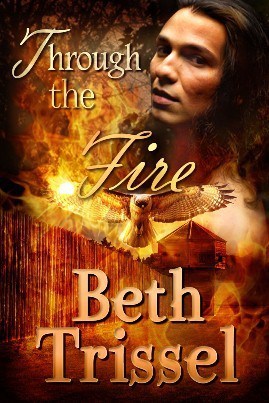 Normally 2.99, Through the Fire is .99 From Nov. 15th–Nov.19th
Normally 2.99, Through the Fire is .99 From Nov. 15th–Nov.19th
“The storyline of Through the Fire is well-written and uncommonly descriptive. Ms. Trissel took great time and effort to research Indian beliefs and their way of life. Anyone who buys this book will take great pleasure in it.” ~You Gotta Read by Laura
“Through the Fire is full of interesting characters, beautifully described scenery, and vivid action sequences. It is a must read for any fan of historical romance.” ~Long and Short Reviews by Poinsettia
2008 Golden Heart® Finalist
Publisher’s Weekly BHB Reader’s Choice Best Books of 2009
Blurb for Through the Fire:
Will love inflame these two natural-born enemies in fiery destruction?
Passions run deep in the raging battle to possess a continent, its wealth and furs. Both the French and English count powerful Indian tribes as their allies. English lady Rebecca Elliot, having eloped to America with a British captain, finds herself a widow. When she ventures into the colonial frontier with the militia to seek her uncle, she unwittingly enters a dangerous world of rugged mountains, wild animals, and even wilder men. The rules are different here and she doesn’t know them, especially those of the savagely handsome warrior who captures her body and her heart.
 Half-Shawnee, half-French warrior Shoka, former guide for English traders, is the hawk, swift, sure, and silent as the moon. He knows all about survival in this untamed land and how deadly distraction can be. His intent is to sell Rebecca to the French before she draws him under her spell, but if he lets her go he can no longer protect her. If he holds onto her, can he safeguard his heart? With battle looming and an enemy warrior bent on vengeance, Shoka and Rebecca must decide whether to fight together or be destroyed.
Half-Shawnee, half-French warrior Shoka, former guide for English traders, is the hawk, swift, sure, and silent as the moon. He knows all about survival in this untamed land and how deadly distraction can be. His intent is to sell Rebecca to the French before she draws him under her spell, but if he lets her go he can no longer protect her. If he holds onto her, can he safeguard his heart? With battle looming and an enemy warrior bent on vengeance, Shoka and Rebecca must decide whether to fight together or be destroyed.
The French and Indian War, A Shawnee Warrior, An English Lady, Blood Vengeance, Deadly Pursuit, Primal, Powerful, Passionate…Through the Fire.
For a moment, he simply looked at her. What lay behind those penetrating eyes?
He held out the cup. “Drink this.”
Did he mean to help her? She’d heard hideous stories of warriors’ brutality, but also occasionally of their mercy. She tried to sit, moaning at the effect this movement had on her aching body. She sank back down.
He slid a corded arm beneath her shoulders and gently raised her head. “Now try.”
Encouraged by his aid, she sipped from the wooden vessel, grimacing at the bitterness. The vile taste permeated her mouth. Weren’t deadly herbs acrid? Was he feigning assistance to trick her into downing a fatal brew?
She eyed him accusingly. “’Tis poison.”
He arched one black brow. “No. It’s good medicine. Will make your pain less.”
 Unconvinced, she clamped her mouth together. She couldn’t prevent him from forcing it down her throat, but she refused to participate in her own demise.
Unconvinced, she clamped her mouth together. She couldn’t prevent him from forcing it down her throat, but she refused to participate in her own demise.
“I will drink. See?” Raising the cup, he took a swallow.
She parted her lips just wide enough to argue. “It may take more than a mouthful to kill.”
His narrowing eyes regarded her in disbelief. “You dare much.”
Though she knew he felt her tremble, she met his piercing gaze. If he were testing her, she wouldn’t waver.
His sharp expression softened. “Yet, you have courage.”~
***Through the Fire is in kindle at Amazon.
 Through the Fire ‘Captures the time period wonderfully.” ~Shelia, Reviewer for Two Lips, Rating Five Lips
Through the Fire ‘Captures the time period wonderfully.” ~Shelia, Reviewer for Two Lips, Rating Five Lips
Cover by my daughter Elise Trissel
Filed under: Uncategorized Tagged: colonial, Frontier, Historical Romance, Indian romance, Native American Romance, Shawnee, The French and Indian War, western


November 14, 2013
The Ghosts Behind Haunting Mystery Romance Somewhere My Love
 A Night Owl Top Pick: “The story will draw a reader in and will not let go until the very last page. It is a novel that will live in the hearts of its readers for a very long time.”
A Night Owl Top Pick: “The story will draw a reader in and will not let go until the very last page. It is a novel that will live in the hearts of its readers for a very long time.”
Volumes and volumes of books have been written about the ghosts of Virginia. Apparently, we have more ghost stories than any other state in the Union. And not because Virginians have a more fertile imagination (although we may) but sadly because the Old Dominion has seen more bloody battles over the centuries than any other. Before you differ with me, think back. Jamestown (founded 1607) was the site of the oldest successful English settlement and its history is a violent one. It’s also kind of creepy. And on we go to the many heart-rending wars fought with the usurped Indians, a number of them waged on Virginia soil.
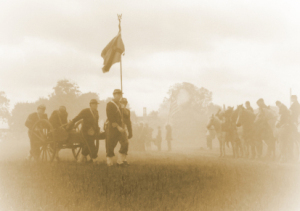 Virginia used to be a lot bigger than it is now, too. It spanned states.
Virginia used to be a lot bigger than it is now, too. It spanned states.And on we march to the Revolution. Anyone heard of Yorktown, to name just one famous battle? And let’s not forget that horrific most uncivil of wars, much of it fought in, you guessed it, Virginia. My ancestors took part in these wars, with the possible exception of James Town, although I’m thinking we came across a family account somewhere. Need to check.
 Back to the ghosts: This plethora of paranormal activity doesn’t only feature soldiers caught in an endless fray who haven’t gotten word the war’s over–although some clairvoyant really should make the rounds of old battle fields and direct these poor souls to the light. Many tales center on the myriad of people who dwelt in our richly historic state. The old Virginia homes and plantations have accumulated a wealth of such stories. It was while touring some of these English styled manor homes with my dear mother that the kernel of a story first came to me for
Somewhere My Love (Somewhere in Time Series)
.
Back to the ghosts: This plethora of paranormal activity doesn’t only feature soldiers caught in an endless fray who haven’t gotten word the war’s over–although some clairvoyant really should make the rounds of old battle fields and direct these poor souls to the light. Many tales center on the myriad of people who dwelt in our richly historic state. The old Virginia homes and plantations have accumulated a wealth of such stories. It was while touring some of these English styled manor homes with my dear mother that the kernel of a story first came to me for
Somewhere My Love (Somewhere in Time Series)
.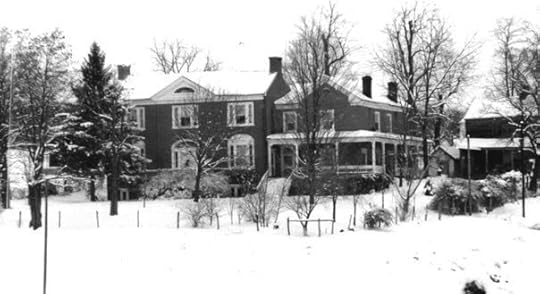 Added to this meld of vintage Virginia is my own heritage. On my father’s side, I descend from old Southern gentry, impoverished after the Civil War, Great Depression, and other misfortunes, including the untimely death of my brilliant grandfather. But the gracious Georgian home his ancestor built (circa 1816) still stands in the countryside near historic Staunton. My ghostly Christmas novella,Somewhere the Bells Ring (Somewhere in Time Series), was inspired by this wonderful old home.
Added to this meld of vintage Virginia is my own heritage. On my father’s side, I descend from old Southern gentry, impoverished after the Civil War, Great Depression, and other misfortunes, including the untimely death of my brilliant grandfather. But the gracious Georgian home his ancestor built (circa 1816) still stands in the countryside near historic Staunton. My ghostly Christmas novella,Somewhere the Bells Ring (Somewhere in Time Series), was inspired by this wonderful old home. Since childhood, I felt the family home place was haunted and wove stories through my fevered mind, along with my continual search for Narnia which entailed frequent treks into the old wardrobe. But I digress. Frequently. The magnificent ancestral portraits in my family and on display in other Virginia homes held me transfixed, wondering. And it was just such a portrait of a striking dark-haired gentleman who embedded himself in my thoughts. Who was he? Why did he die so young? That other painting of the fair young lady…did she love him?
Since childhood, I felt the family home place was haunted and wove stories through my fevered mind, along with my continual search for Narnia which entailed frequent treks into the old wardrobe. But I digress. Frequently. The magnificent ancestral portraits in my family and on display in other Virginia homes held me transfixed, wondering. And it was just such a portrait of a striking dark-haired gentleman who embedded himself in my thoughts. Who was he? Why did he die so young? That other painting of the fair young lady…did she love him?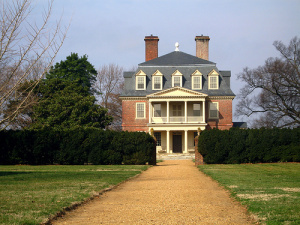 Often, the guides at these old homes are brimming with tales. But other times we are left to wonder…and ask ourselves are these folk who’ve gone before us truly gone, or do some still have unfinished business in this realm? And what of the young lovers whose time was tragically cut short, do they somehow find a way? Love conquers all, and so I answer ‘yes.’
Often, the guides at these old homes are brimming with tales. But other times we are left to wonder…and ask ourselves are these folk who’ve gone before us truly gone, or do some still have unfinished business in this realm? And what of the young lovers whose time was tragically cut short, do they somehow find a way? Love conquers all, and so I answer ‘yes.’*Homes most prominent behind the inspiration for Somewhere My Love :
Berkely Plantation (On the James River & well worth a visit)
Family home place called Chapel Hill (Not open to the public)
Shirley Plantation (On the James River & well worth a visit)
 Blurb For Somewhere My Love
:
Blurb For Somewhere My Love
:Fated lovers have a rare chance to reclaim the love cruelly denied them in the past, but can they grasp this brief window in time before it’s too late?
Two hundred years ago Captain Cole Wentworth, the master of an elegant Virginian home, was murdered in his chamber where his portrait still hangs. Presently the estate is a family owned museum run by Will Wentworth, a man so uncannily identical to his ancestor that spirit-sensitive tour guide Julia Morrow has trouble recognizing Cole and Will as separate. As Julia begins to remember the events of Cole’s death, she must convince Will that history is repeating, and this time he has the starring role in the tragedy. The blade is about to fall.~
 “As I read Somewhere My Love, I recalled the feelings I experienced the first time I read Daphne DuMaurier’s Rebecca long ago. Using the same deliciously eerie elements similar to that Gothic romance, Beth Trissel has captured the haunting dangers, thrilling suspense and innocent passions that evoke the same tingly anticipation and heartfelt romance I so enjoyed then, and still do now.”~joysann for Publisher’s Weekly
“As I read Somewhere My Love, I recalled the feelings I experienced the first time I read Daphne DuMaurier’s Rebecca long ago. Using the same deliciously eerie elements similar to that Gothic romance, Beth Trissel has captured the haunting dangers, thrilling suspense and innocent passions that evoke the same tingly anticipation and heartfelt romance I so enjoyed then, and still do now.”~joysann for Publisher’s Weekly***Somewhere My Love is available in kindle and print at Amazon and Barnes & Noble and in eBook at Kobo!
Filed under: Uncategorized Tagged: award winning romance, ghost story, ghostly, haunting, Historical romance novel, James River, murder mystery, Paranormal, Shirley Plantation, Thriller, Time travel romance, Virginia


November 12, 2013
What Made Juliet Slumber and Witches Fly?
I know! I know! Beth has her hand up.
Belladonna (Deadly Nightshade)
“In Italian, a belladonna is a beautiful lady; in English it’s a deadly poison.” ~Ambrose Bierce
Alternate name for Belladonna: Devil‘s Cherries, Naughty Man’s Cherries, Divale, Black Cherry, Devil’s Herb, Great Morel, Dwayberry.
The Atropa genus (that Atropa belladonna belongs to) is a member of the Solanaceae (the nightshade or potato) family of plants which includes brugmansia, capsicum (used to make paprika and chili pepper), eggplant, jimsonweed, mandrake, petunia, potato, tobacco, and tomato plants.
 Belladonna has a fascinating history and uses. All parts of the plant are potentially toxic, including the berries, and it’s made into a liquid extract which can be administered. The toxin is also absorbed through the skin.
Belladonna has a fascinating history and uses. All parts of the plant are potentially toxic, including the berries, and it’s made into a liquid extract which can be administered. The toxin is also absorbed through the skin.
From Rodale’s Illustrated Encyclopedia of Herbs: “During the Middle Ages, men and women believed that deadly nightshade was the favorite plant of the devil. This is not surprising when one considers the stories told of this plant. Belladonna was said to be an ingredient in the refreshments of wild orgies at which women would strip off their clothes, dance, and throw themselves into the arms of eager men. Sorcerers and witches added the juices of the plant to their brews and ointments. Witches rubbed a lotion containing belladonna and aconite into their skin believing that it helped them to fly. Given the physiological effects of both of these herbs, in a way it probably did make them fly. Deadly nightshade’s toxicity did not go unnoticed either. Men used this herb frequently to kill.”
From A Modern Herbal:
Habitat: Widely distributed over Central and Southern Europe, South-west Asia and Algeria; cultivated in England, France and North America. (I’m not cultivating deadly nightshade but it grows freely in my yard and garden if not pulled out.)
Description: The root is thick, fleshy and whitish, about 6 inches long, or more, and branching. It is perennial. The purplish-coloured stem is annual and herbaceous. It is stout, 2 to 4 feet high, undivided at the base, but dividing a little above the ground into three – more rarely two or four branches, each of which again branches freely.
The leaves are dull, darkish green in colour and of unequal size, 3 to 10 inches long…the fresh plant, when crushed, exhales a disagreeable odour, almost disappearing on drying, and the leaves have a bitter taste, when both fresh and dry.
The flowers, which appear in June and July, singly, in the axils of the leaves, and continue blooming until early September, are of a dark and dingy purplish colour, tinged with green, large (about an inch long), pendent, bell-shaped, furrowed, the corolla with five large teeth or lobes, slightly reflexed. The five-cleft calyx spreads round the base of the smooth berry, which ripens in September, when it acquires a shining black colour and is in size like a small cherry. It contains several seeds. The berries are full of a dark, inky juice, and are intensely sweet, and their attraction to children on that account, has from their poisonous properties, been attended with fatal results.
 It is said that when taken by accident, the poisonous effects of Belladonna berries may be prevented by swallowing as soon as possible an emetic, such as a large glass of warm vinegar or mustard and water. In undoubted cases of this poisoning, emetics and the stomach-pump are resorted to at once, followed by a dose of magnesia, stimulants and strong coffee, the patient being kept very warm and artificial respiration being applied if necessary. A peculiar symptom in those poisoned by Belladonna is the complete loss of voice, together with frequent bending forward of the trunk and continual movements of the hands and fingers, the pupils of the eye becoming much dilated.
It is said that when taken by accident, the poisonous effects of Belladonna berries may be prevented by swallowing as soon as possible an emetic, such as a large glass of warm vinegar or mustard and water. In undoubted cases of this poisoning, emetics and the stomach-pump are resorted to at once, followed by a dose of magnesia, stimulants and strong coffee, the patient being kept very warm and artificial respiration being applied if necessary. A peculiar symptom in those poisoned by Belladonna is the complete loss of voice, together with frequent bending forward of the trunk and continual movements of the hands and fingers, the pupils of the eye becoming much dilated.
 History: The plant in Chaucer’s days was known as Dwale, which Dr. J. A. H. Murray considers was probably derived from the Scandinavian dool, meaning delay or sleep. Other authorities have derived the word from the Frenchdeuil (grief), a reference to its fatal properties.
History: The plant in Chaucer’s days was known as Dwale, which Dr. J. A. H. Murray considers was probably derived from the Scandinavian dool, meaning delay or sleep. Other authorities have derived the word from the Frenchdeuil (grief), a reference to its fatal properties.
Its deadly character is due to the presence of an alkaloid, Atropine, 1/10 grain of which swallowed by a man has occasioned symptoms of poisoning. As every part of the plant is extremely poisonous, neither leaves, berries, nor root should be handled if there are any cuts or abrasions on the hands. The root is the most poisonous, the leaves and flowers less so, and the berries, except to children, least of all. It is said that an adult may eat two or three berries without injury, but dangerous symptoms appear if more are taken, and it is wiser not to attempt the experiment.
Belladonna is supposed to have been the plant that poisoned the troops of Marcus Antonius during the Parthian wars. Plutarch gives a graphic account of the strange effects that followed its use.
 Buchanan relates in his History of Scotland (1582) a tradition that when Duncan I was King of Scotland, the soldiers of Macbeth poisoned a whole army of invading Danes by a liquor mixed with an infusion of Dwale supplied to them during a truce. Suspecting nothing, the invaders drank deeply and were easily overpowered and murdered in their sleep by the Scots.
Buchanan relates in his History of Scotland (1582) a tradition that when Duncan I was King of Scotland, the soldiers of Macbeth poisoned a whole army of invading Danes by a liquor mixed with an infusion of Dwale supplied to them during a truce. Suspecting nothing, the invaders drank deeply and were easily overpowered and murdered in their sleep by the Scots.
According to old legends, the plant belongs to the devil who goes about trimming and tending it in his leisure, and can only be diverted from its care on one night in the year, that is on Walpurgis, when he is preparing for the witches’ sabbath. The apples of Sodom are held to be related to this plant, and the name Belladonna is said to record an old superstition that at certain times it takes the form of an enchantress of exceeding loveliness, whom it is dangerous to look upon, though a more generally accepted view is that the name was bestowed on it because its juice was used by the Italian ladies to give their eyes greater brilliancy, the smallest quantity having the effect of dilating the pupils of the eye.
 Another derivation is founded on the old tradition that the priests used to drink an infusion before they worshipped and invoked the aid of Bellona, the Goddess of War.
Another derivation is founded on the old tradition that the priests used to drink an infusion before they worshipped and invoked the aid of Bellona, the Goddess of War.
The generic name of the plant, Atropa, is derived from the Greek Atropos, one of the Fates who held the shears to cut the thread of human life – a reference to its deadly, poisonous nature.
Thomas Lupton (1585) says: ‘Dwale makes one to sleep while he is cut or burnt by cauterizing.’ Gerard (1597) calls the plant the Sleeping Nightshade, and says the leaves moistened in wine vinegar and laid on the head induce sleep.
 Mandrake, a foreign species ofAtropa (A. Mandragora), was used in Pliny’s day as an anesthetic for operations. Its root contains an alkaloid, Mandragorine. The sleeping potion of Juliet was a preparation from this plant – perhaps also the Mandrake wine of the Ancients. It was called Circaeon, being the wine of Circe.
Mandrake, a foreign species ofAtropa (A. Mandragora), was used in Pliny’s day as an anesthetic for operations. Its root contains an alkaloid, Mandragorine. The sleeping potion of Juliet was a preparation from this plant – perhaps also the Mandrake wine of the Ancients. It was called Circaeon, being the wine of Circe.
Mandrake, the screaming roots in Harry Potter, is related to Belladonna.
Antidotes and treatment for Belladonna poisoning from: Henley’s Twentieth Century Formulas Recipes Processes :
Antidotes for Poisons: Belladonna, or Deadly Nightshade
Symptoms: Dryness of the mouth and throat, great thirst, difficulty of swallowing, nausea, dimness, confusion or loss of vision, great enlargement of the pupils, dizziness, delirium, and coma. Treatment: There is no known antidote. Give a prompt emetic and then reliance must be placed on continual stimulation with brandy, whisky, etc., and to necessary artificial respiration. Opium and its preparations, as morphia, laudanum, etc., are thought by some to counteract the effect of belladonna, and may be given in small and repeated doses, as also strong black coffee and green tea.
And good luck with that.
Filed under: Uncategorized Tagged: Atropa, belladonna, Datura stramonium, Deadly Nightshade, Flying ointment, herbal anesthetic, Middle Ages, Poison, screaming roots


November 11, 2013
My Native American Warrior Series to Date
 In addition to Native Americans, hardy Scots-Irish frontiersmen and women, colonial Englishmen and ladies, and even a few Frenchmen also play an important role in this series. So far, it spans the gamut from the dramatic era of the French and Indian War, through Pontiac’s War, The American Revolution and shortly thereafter. But that time period may broaden as more stories are added to this line. I have a growing selection for you to consider. All lengths. A collection of historical romance featuring those Celts settled in the rugged Alleghenies and the Shenandoah Valley of Virginia, and the Native Americans they encountered.My Native American Warrior Series loosely ties together based more on time and place and strong Native American characters than as a traditional series that follows the storyline. However, Kira, Daughter of the Moon is the actual sequel to Through the Fire, and there will be other sequels. And stories.
In addition to Native Americans, hardy Scots-Irish frontiersmen and women, colonial Englishmen and ladies, and even a few Frenchmen also play an important role in this series. So far, it spans the gamut from the dramatic era of the French and Indian War, through Pontiac’s War, The American Revolution and shortly thereafter. But that time period may broaden as more stories are added to this line. I have a growing selection for you to consider. All lengths. A collection of historical romance featuring those Celts settled in the rugged Alleghenies and the Shenandoah Valley of Virginia, and the Native Americans they encountered.My Native American Warrior Series loosely ties together based more on time and place and strong Native American characters than as a traditional series that follows the storyline. However, Kira, Daughter of the Moon is the actual sequel to Through the Fire, and there will be other sequels. And stories.
Historical Romance Novel Redbird’s Song: (Inspired by events that occurred to my early American ancestors in the colonial frontier)
Blurb: Taken captive by a Shawnee war party wasn’t how Charity Edmondson hoped to escape an unwanted marriage. Nor did Shawnee warrior Wicomechee expect to find the treasure promised by his grandfather’s vision in the unpredictable red-headed girl.
George III’s English Red-Coats, unprincipled colonial militia, prejudice and jealousy are not the only enemies Charity and Wicomechee will face before they can hope for a peaceful life. The greatest obstacle to happiness is in their own hearts.As they struggle through bleak mountains and cold weather, facing wild nature and wilder men, Wicomechee and Charity must learn to trust each other.
2012 EPIC Ebook Award Finalist
Cover by Rae Monet
 “This is a beautifully written story filled with adventure and suspense…This book touched my soul even as it provided a thrilling fictional escape into a period of history I have always found fascinating.” –Night Owl Book Review by Laurie-J
“This is a beautifully written story filled with adventure and suspense…This book touched my soul even as it provided a thrilling fictional escape into a period of history I have always found fascinating.” –Night Owl Book Review by Laurie-J“I loved the descriptions…I felt I was there…Many mystical episodes are intermingled with the events…The ending is a real surprise, but I will let you have the pleasure of reading it for yourself.” –Seriously Reviewed
With Red Bird’s Song, Beth Trissel has painted an unforgettable portrait of a daring and defiant love brought to life in the wild and vivid era of Colonial America. Highly recommended for lovers of American history and romance lovers alike!~Virginia Campbell”I liked this book so much. The author has done a magnificent job of creating both characters and setting. The descriptions of the area are wonderful and put the reader right in there with the characters…I will most certainly read other books by this author.” Overall rating 5 out of 5 hearts Reviewer: Jaye Leyel for The Romance Studio
***Available in print and kindle at Amazon, in NookBook, and from other online booksellers
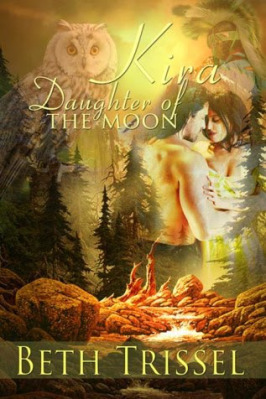
Kira, Daughter of the Moon~
“I have been a fan of Ms. Trissel’s work for years. Kira, Daughter of the Moon completely lived up to every one of my expectations. I highly recommend this wonderfully written tale to anyone who loves historical romance.” ~Five Stars from Poinsettia for Long and Short Reviews
‘A beautiful Scots-Irish healer in the rugged Alleghenies finds herself accused of witchcraft. With the terror of the French and Indian War fresh in her mind, can Kira love a white warrior?’
‘The Rugged Alleghenies, A White Warrior, Beautiful Scots-Irish Healer, Unrequited Love—Requited, Charges of Witchcraft, Vindictive Ghost, Lost Treasure, Murderous Thieves, Deadly Pursuit, Hangman’s Noose Waiting…Kira, Daughter of the Moon’
***Available in print and various ebook formats from The Wild Rose Press, Amazon, Barnes & Noble in Nookbook, All Romance eBooks, and other online booksellers.
Set among the superstitious Scots in the rugged Alleghenies, the story is an adventurous romance with a blend of Celtic and Native American flavors. Although written to stand alone, Kira, Daughter of the Moon is the long-awaited sequel to my award-winning historical romance novel, Through the Fire . *Cover by Rae Monet~
 Blurb: Logan McCutcheon returns to colonial Virginia after seven years in the hands of Shawnee Indians. But was he really a captive, as everybody thinks? He looks and fights like a warrior, and seems eager to return to those he calls friends and family.
Blurb: Logan McCutcheon returns to colonial Virginia after seven years in the hands of Shawnee Indians. But was he really a captive, as everybody thinks? He looks and fights like a warrior, and seems eager to return to those he calls friends and family.Kira McClure has waited for Logan all those years, passing herself off as odd to keep suitors at bay–and anyone else from getting too close. Now that he’s back, he seems to be the only person capable of protecting her from the advances of Josiah Campbell and accusations of witchcraft. And to defend the settlers against a well-organized band of murderous thieves.~
(Logan, the ‘white warrior’ from Kira, Daughter of the Moon. One of my all time favorite heroes.)

Amazon Reader Review: 5.0 out of 5 stars
Another splendid historical!, October 25, 2012
By Jinny K B - See all my reviews
This review is from: Kira, Daughter of the Moon (Paperback)
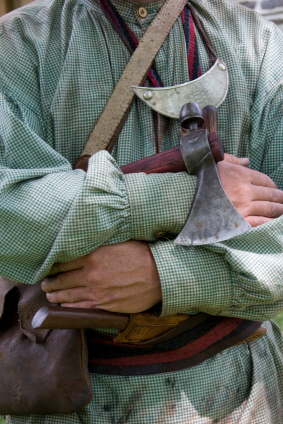 “Beth Trissel has written another thoughtful recreation of colonial times in this sequel to ‘Through The Fire’. Kira lives with relatives deep in the mountains of Virginia at a time when the English, French, and Native Americans are embroiled in constant skirmishes and out-and-out war. Logan was captured by the Indians seven years earlier and returns, now more Indian that white man, to retrieve a cache of gold left behind by others. Once he meets up with Kira, his childhood friend, sparks fly and he will have her for his own.
“Beth Trissel has written another thoughtful recreation of colonial times in this sequel to ‘Through The Fire’. Kira lives with relatives deep in the mountains of Virginia at a time when the English, French, and Native Americans are embroiled in constant skirmishes and out-and-out war. Logan was captured by the Indians seven years earlier and returns, now more Indian that white man, to retrieve a cache of gold left behind by others. Once he meets up with Kira, his childhood friend, sparks fly and he will have her for his own.While following Kira and Logan’s personal battles we meet the best and worst of mankind. Evil and criminal forces threaten to keep them apart, and even kill them. Kira must learn to curb her tongue, hide her strange abilities and develop a strength she never dreamed she would be able to show. But is Logan worth the cost? Will he be true to her and give her a life she will be able to embrace? Can they ferret out the true villains and find peace and safety?
Miss Trissel’s lush descriptions of the rugged mountains, the harsh living conditions, and the uncertain times give life to what our forefathers endured to build a land we now call America. The characters, rugged Scot-Irish men and women, soldiers, Indians, and engaging children, come alive in this romantic adventure of life and love on the frontier.”
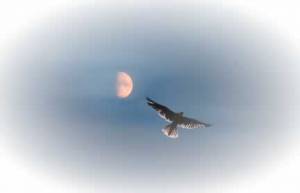
Native American Historical Romance Novel Through the Fire:
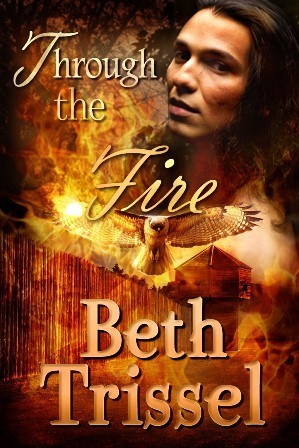
Award-winning historical romance novel
“The storyline of Through the Fire is well-written and uncommonly descriptive. Ms. Trissel took great time and effort to research Indian beliefs and their way of life. Anyone who buys this book will take great pleasure in it.” ~You Gotta Read by Laura
“Through the Fire is full of interesting characters, beautifully described scenery, and vivid action sequences. It is a must read for any fan of historical romance.” ~Long and Short Reviews by Poinsettia
2008 Golden Heart® Finalist
Publisher’s Weekly BHB Reader’s Choice Best Books of 2009

Blurb for Through the Fire:
Will love inflame these two natural-born enemies in fiery destruction?
Passions run deep in the raging battle to possess a continent, its wealth and furs. Both the French and English count powerful Indian tribes as their allies. English lady Rebecca Elliot, having eloped to America with a British captain, finds herself a widow. When she ventures into the colonial frontier with the militia to seek her uncle, she unwittingly enters a dangerous world of rugged mountains, wild animals, and even wilder men. The rules are different here and she doesn’t know them, especially those of the savagely handsome warrior who captures her body and her heart.
 Half-Shawnee, half-French warrior Shoka, former guide for English traders, is the hawk, swift, sure, and silent as the moon. He knows all about survival in this untamed land and how deadly distraction can be. His intent is to sell Rebecca to the French before she draws him under her spell, but if he lets her go he can no longer protect her. If he holds onto her, can he safeguard his heart? With battle looming and an enemy warrior bent on vengeance, Shoka and Rebecca must decide whether to fight together or be destroyed.
Half-Shawnee, half-French warrior Shoka, former guide for English traders, is the hawk, swift, sure, and silent as the moon. He knows all about survival in this untamed land and how deadly distraction can be. His intent is to sell Rebecca to the French before she draws him under her spell, but if he lets her go he can no longer protect her. If he holds onto her, can he safeguard his heart? With battle looming and an enemy warrior bent on vengeance, Shoka and Rebecca must decide whether to fight together or be destroyed.The French and Indian War, A Shawnee Warrior, An English Lady, Blood Vengeance, Deadly Pursuit, Primal, Powerful, Passionate…Through the Fire.
 Excerpt:
Excerpt:For a moment, he simply looked at her. What lay behind those penetrating eyes?
He held out the cup. “Drink this.”
Did he mean to help her? She’d heard hideous stories of warriors’ brutality, but also occasionally of their mercy. She tried to sit, moaning at the effect this movement had on her aching body. She sank back down.
He slid a corded arm beneath her shoulders and gently raised her head. “Now try.”
Encouraged by his aid, she sipped from the wooden vessel, grimacing at the bitterness. The vile taste permeated her mouth. Weren’t deadly herbs acrid? Was he feigning assistance to trick her into downing a fatal brew?
She eyed him accusingly. “’Tis poison.”
He arched one black brow. “No. It’s good medicine. Will make your pain less.”
 Unconvinced, she clamped her mouth together. She couldn’t prevent him from forcing it down her throat, but she refused to participate in her own demise.
Unconvinced, she clamped her mouth together. She couldn’t prevent him from forcing it down her throat, but she refused to participate in her own demise.“I will drink. See?” Raising the cup, he took a swallow.
She parted her lips just wide enough to argue. “It may take more than a mouthful to kill.”
His narrowing eyes regarded her in disbelief. “You dare much.”
Though she knew he felt her tremble, she met his piercing gaze. If he were testing her, she wouldn’t waver.
His sharp expression softened. “Yet, you have courage.”~
***Through the Fire is in kindle at Amazon
Cover by my daughter Elise Trissel

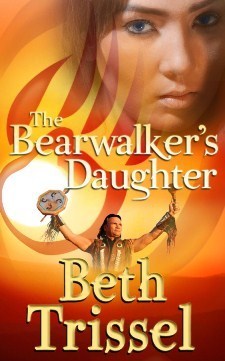 A Handsome frontiersman, Mysterious Scots-Irish Woman, Bearwalking Shawnee Warrior, Dark Secret, Pulsing Romance…The Bearwalker’s Daughter
A Handsome frontiersman, Mysterious Scots-Irish Woman, Bearwalking Shawnee Warrior, Dark Secret, Pulsing Romance…The Bearwalker’s Daughter~The strange awareness inside Karin grew, like a summons urging her to an untamed place. His gaze drew her almost against her will. She leaned toward him.
“Someone seeks you, Shequenor’s dahnaithah.”
The message rippled through her. And she knew—his was the inviting summons in the wind.~
Karin McNeal hasn’t grasped who she really is or her fierce birthright. A tragic secret from the past haunts the young Scots-Irish woman longing to learn more of her mother’s death and the mysterious father no one will name. The elusive voices she hears in the wind hint at the dramatic changes soon to unfold in the mist-shrouded Alleghenies in Autumn, 1784.
Jack McCray, the wounded stranger who staggers through the door on the eve of her twentieth birthday and anniversary of her mother’s death, holds the key to unlock the past. Will Karin let this handsome frontiersman lead her to the truth and into his arms, or seek the shelter of her fiercely possessive kinsmen? Is it only her imagination or does someone, or something, wait beyond the brooding ridges—for her?
 (A revised version of Daughter of the Wind)
(A revised version of Daughter of the Wind)“Ms. Trissel’s alluring style of writing invites the reader into a world of fantasy and makes it so believable it is spellbinding.” -Long and Short Reviews
“I loved the plot of this story, oh, and the setting was wonderful.”-Mistress Bella Reviews
“I found this book fascinating.” -Bitten By Books
Publisher’s Weekly BHB Reader’s Choice Best Books of 2009
***Available at Amazon in Kindle
Cover by my daughter Elise Trissel
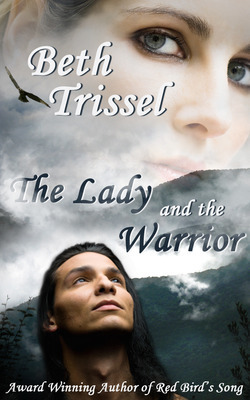 Blurb for The Lady and the Warrior:
Blurb for The Lady and the Warrior:An abused young wife stranded in the Alleghenies in 1783 is rescued from drowning by a rugged frontiersman who shows her kindness and passion. But is he more than he seems? And can they ever be together?
About The Lady and the Warrior:
A short historical romance story with a The Last of the Mohican’s flavor to give readers a taste of my full-length American historical romance novels. If you like The Lady and the Warrior, chances are you will enjoy Red Bird’s Song and Through the Fire, and Kira, Daughter of the Moon. All have a strong Native American theme interwoven with the plot.
***Available at Amazon Kindle for .99
Amazon Reader Review:
5.0 out of 5 stars Really good romance, March 24, 2012
By D.S. “Luvs2read” (USA) - See all my reviews
Amazon Verified Purchase
This review is from: The Lady and the Warrior (Kindle Edition)
“I’ve read a few other books written by Beth Trissel so decided to give this one a shot. Really glad I did. I’m in love with this story. It was incredibly touching. A true romance. This author has a way of pulling on your heartstrings. Yep, I got a little emotional. If you’re looking to read something memorable, this tale is for you!”

Cover by my daughter Elise Trissel
 Author Awards:
Author Awards:2008 Golden Heart® Finalist
2008 Winner Preditor’s & Editor’s Readers Poll
Publisher’s Weekly BHB Reader’s Choice Best Books of 2009
2010 Best Romance Novel List at Buzzle
*2012 Double Epic Award Finalist *2012 Reader’s Favorite Finalist
2013 Won Book of the Month at Long and Short Reviews
If you enjoyed this post, you might also appreciate my post on Native American Sayings and Images.
Filed under: Uncategorized Tagged: adventure romance, best American Indian romance ebooks, French and Indian War, Historical Romance, Native American Romance, The Colonial Frontier, The French and Indian War, The Last of the Mohicans, western frontier, western romance


November 8, 2013
‘A Very Virginia Christmas Stories and Traditions’–Charming Christmas Collection!
 A Very Virginia Christmas: Stories and Traditions (2012 Independent Publishers Gold Medalist) by Wilford Kale debuted last November at the Barnes & Noble in Colonial Williamsburg. I was among the authors who took part in the auspicious signing. Why, you may ask?
A Very Virginia Christmas: Stories and Traditions (2012 Independent Publishers Gold Medalist) by Wilford Kale debuted last November at the Barnes & Noble in Colonial Williamsburg. I was among the authors who took part in the auspicious signing. Why, you may ask?
Because I’m delighted to have an account from my nonfiction book, Shenandoah Watercolors, included in A Very Virginia Christmas. My holiday excerpt in this wonderful collection describes celebrating Christmas at the old Family home place in the Shenandoah Valley. I’m honored to be among the illustrious authors who span centuries of life in my beloved Virginia, and proud to add my voice to the holiday reminiscences from our beautiful valley. If you haven’t gotten your copy yet, you’re missing out, and it’s getting to be that time of year again. The book would make an excellent Christmas gift. A Very Virginia Christmas is available in hardcover at Amazon and from many other booksellers.
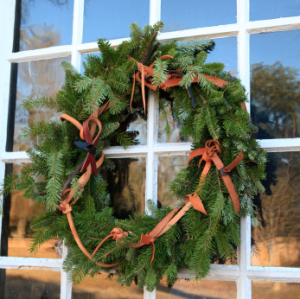
The publisher of this lovely Christmas Collection, Parke Press, has this to say about A Very Virginia Christmas:
“For the past 400 years, Virginians have created traditions of their own, borrowing from a variety of Christmas celebrations in other countries. This year, Wilford Kale has compiled the work of 16 contributors telling how Virginians observe the Christian wintertime holiday: from the Shenandoah Valley to the Eastern Shore, from colonial days up to the 21st century, in times of need to times of feasting and merriment. Read about eggnog, Robert E. Lee‘s Christmas, Parke Rouse‘s Christmas on the Southside, Richmond’s Nativity pageant, and Earl Hamner‘s childhood Christmas in the Virginia mountains. You will also find stories including the Christmas Truce, the origin of “Jingle Bells” and “Rudolph,” along with other Christmas favorites. Your storytelling time at Christmas will be warmer and cozier than ever with these tales that remind all ages of the real meaning of “the most wonderful time of the year.”
 An article in the Virginia Gazette gives even more insights to this vintage Christmas collection and the special man behind it, Wilford Kale. Entitled A Jolly Collection of Virginia Christmases, the article goes on to say: ”Who better to compile a book about Christmas in Virginia than a man who could pass for Santa Claus. Wilford Kale, a long-time journalist, short-term politician and part-time Kris Kringle, has edited “A Very Virginia Christmas – Stories and Traditions,” a new collection of stories, anecdotes and traditions about Christmas. He’s included the work of some heavy hitters, including Earl Hamner of “The Waltons” fame, Booker T. Washington, Park Rouse and Francis Church. Oh, Henry Wadsworth Longfellow and Alfred Tennyson are included too.
An article in the Virginia Gazette gives even more insights to this vintage Christmas collection and the special man behind it, Wilford Kale. Entitled A Jolly Collection of Virginia Christmases, the article goes on to say: ”Who better to compile a book about Christmas in Virginia than a man who could pass for Santa Claus. Wilford Kale, a long-time journalist, short-term politician and part-time Kris Kringle, has edited “A Very Virginia Christmas – Stories and Traditions,” a new collection of stories, anecdotes and traditions about Christmas. He’s included the work of some heavy hitters, including Earl Hamner of “The Waltons” fame, Booker T. Washington, Park Rouse and Francis Church. Oh, Henry Wadsworth Longfellow and Alfred Tennyson are included too.The collection includes four centuries of Christmas memories and anecdotes, ranging from Capt. John Smith to the generations of children who visited perhaps the state’s best-known Santa at Miller & Rhoads in Richmond.”
To that I add, and me! For the complete article, visit the link. And God Bless us Everyone!

***Images of the old family home place outside of Staunton, Virginia, a wreath in Colonial Williamsburg, and a Victorian Santa Claus (royalty free)
Filed under: Uncategorized Tagged: Christmas, Christmas collection, Christmas stories, colonial williamsburg, Henry Wadsworth Longfellow, holiday celebrations, John Smith, Robert E. Lee, Santa Claus, Shenandoah Valley, Virginia


November 7, 2013
Superstitions and Lore from the Shenandoah Valley
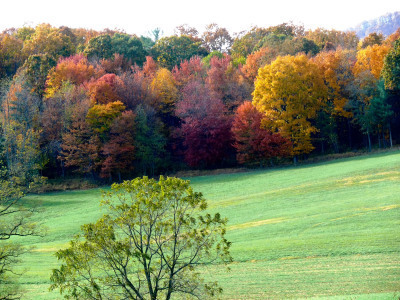
(The Shenandoah Valley of Virginia by my mother Pat Churchman)
These sayings are taken from Shenandoah Voices : Folklore, Legends, and Traditions of the Valley by late historian and author John Heatwole. I also threw in some cures. Images of the Shenandoah Valley and Mountains were taken by my talented family.
 I knew and greatly respected John Heatwole. He even helped me with some of the initial research for my first historical novels. The wealth of knowledge he amassed is just one of the rich legacies John left behind.
I knew and greatly respected John Heatwole. He even helped me with some of the initial research for my first historical novels. The wealth of knowledge he amassed is just one of the rich legacies John left behind.Shenandoah Voices is my favorite book by him. I recommend it to anyone interested in the old ways and days of rural Virginia, especially the valley and surrounding mountains. I was also privileged to hear John speak on this fascinating subject. He’s best known for his vast knowledge and books about the Civil War. He was also an amazing wood carver/artist, a man of many talents. Much missed.
(Image of log hog/chicken barn by my husband Dennis.)
****
Many early valley settlers were Scots-Irish, my ancestors among them. People from the British Isles tended to be superstitious. Also prevalent in the valley were Germans bringing the influence of the Pennsylvania-Dutch, another superstitious group. To quote Michael Scott, boss from NBC’s hit show, The Office, “I’m not superstitious, just a little stitious.”
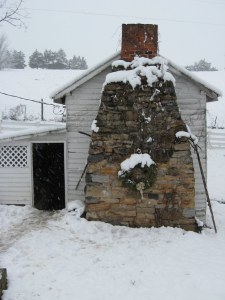 It’s bad luck to lay a hat on the bed.~
It’s bad luck to lay a hat on the bed.~An itching nose means a visitor is coming. ~
A cardinal bumping against the window pane is an indication of an early death~
*To this I have to add ‘or an insanely jealous bird regarding his reflection as another male which tends to happen with cardinals.’
Peel an apple all in one piece and throw the peel over your shoulder. When you turn around and look at it lying on the ground, whatever letter it reminds you of will be the first letter of your future husband’s last name.~ (This is an ancient Celtic Custom)
It’s bad luck to point at a rainbow. ~ *I suspect we are all guilty of this one. Who knew?
It’s bad luck to bring a shovel into the house ‘because it is a grave tool.’ Some also think a hoe in the house bodes no good.~ (Image of old smokehouse from the outside and from the inside below. The smokehouse is at our favorite Christmas tree farm outside the tiny hamlet of Singers Glen.
(Images by daughter Elise.)
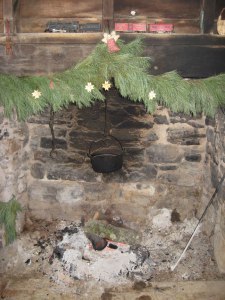 If you enter a house and leave it without sitting down it is bad luck. Particularly if you leave by a different door than the one you entered.~
If you enter a house and leave it without sitting down it is bad luck. Particularly if you leave by a different door than the one you entered.~If a bird flies into your house there will soon be a death in the family~Within six months if a whippoorwill comes to your treetop and sings at night. ~ *How many of you have even heard a whippoorwill? I have.
If a baby smiles in its sleep, the child is talking to the angels. ~ *My personal favorite.
Rain isn’t far behind when a tree shows the underside of its leaves.~
Count the number of foggy mornings in August and that is how many winter snows there will be.~ I heard this one not long ago and suspect it may be true. I’m also a believer in wooley bears predicting winter…
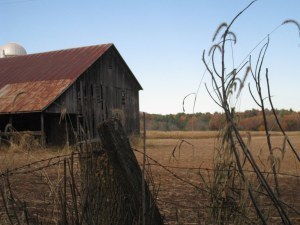 A new moon with the points up means dry weather, and a moon with the points down means rain will soon fall. ~
A new moon with the points up means dry weather, and a moon with the points down means rain will soon fall. ~If a full moon has a ring around it there will be snow by morning. ~
If the ring is large, the number of stars you count in it will be the number of inches that fall.~ *We say a ring around the moon means rain, or snow, within a few days.
(Creepy old barn up behind our house taken by Daughter Elise.)
Sheep shearing takes place around the first of May. A cold rain will follow within a few days of shearing called a sheep rain. ~
On Ash Wednesday people made pancakes or the chickens wouldn’t lay.~ *We still have pancake suppers in the valley on that day.

Horse chestnuts carried in the pocket are thought to ward off rheumatism. ~
Sassafras tea is good to thin the blood. ~
Broth made from the hind legs of mice is good for kidney ailments.~ *Not tried this one. ‘Swamp root’ tea is also recommended for kidney disorders.~ I’ll have to research exactly what swamp root is.
(The Alleghenies by my mother)
For someone who is weak and recovering from long illness, make them sparrow broth tea. ~ *This supposedly saved my grandmother’s life when she was sick as a child.
Before taking a new baby out for its first ride (this probably applied to a wagon or buggy) the ‘herb lady’ rubbed warm bear grease on one of the infant’s palms and the bottom of the opposite foot thus insuring that the baby was protected from the rigors of the journey.
 A hog’s tooth carried in your right pocket will ward off toothache.~ *Maybe I should take up this one.
A hog’s tooth carried in your right pocket will ward off toothache.~ *Maybe I should take up this one.Catnip tea was made for children with colic.~ Tea from peppermint leaves will stop a stomachache.~ *These are still practiced.
Sage tea will keep a woman’s hair from turning gray prematurely.~
(old bridge in the valley, bordering the Alleghenies by my husband)
Treat measles with sheep manure that has been boiled, strained, and diluted with moonshine.~ *I assume with enough moonshine the patient didn’t notice the manure so much.
For a bad cold put lard on your chest sprinkled with salt. Another remedy is a mustard plaster made with mustard, lard, and egg whites and laid on the chest~
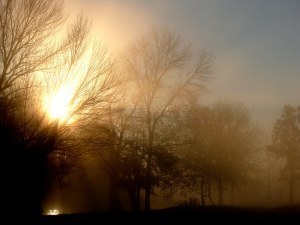
Freckles on the face can be washed away on the first of May. If they are washed in morning dew, they will be transferred to the hands which can be dried on another less visible part of the body like the arms or legs and left there permanently. It’s recommended that this practice be repeated for three years in a row to work. ~ Quite an investment in time.
(Image of river in the mist by my mother)
When mumps invade your house put hog manure on the throat as a relief or cure. ~ *Considering the stench of hog manure, I doubt the sufferer would find much relief.
To get rid of warts, tie a knot in a string for each wart you have and bury it under rock. When the string rots the wart will be gone. ~
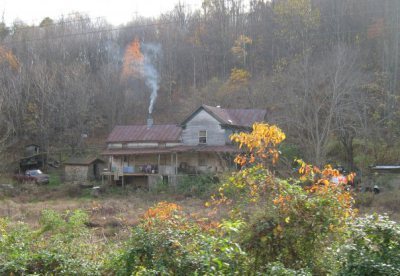
(Old house in the Blue Ridge Mountains by my husband)
If you are sitting up with an ill person and a spark flies from the fireplace in the room, it is a sign of impending death. (From Hardy County, West Virginia).
It would be a terrible mistake for you to kill a lightning bug because lightning might kill you during the next electrical storm. (From Wise County, Virginia)
In the Blue Ridge Mountains it was believed that if a glass fell from a table after midnight and rolled across the floor, a coffin would have to be made the next day.
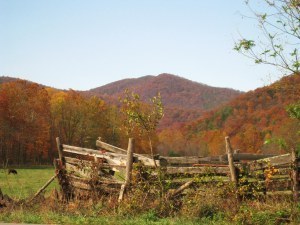 And I could go on, but this is enough for now. Well, maybe one more.
And I could go on, but this is enough for now. Well, maybe one more.When springtime rolls around again, and if you are fortunate enough to make a wish on the first toad you see hopping by, you will have abundant good luck. (From Wise County)
(The Alleghenies by my husband)
Filed under: Uncategorized Tagged: Autumn, country life, herbal lore, mountain people, old time cures, old time sayings, Pennsylvania Dutch, The Allegheny Mountains, the Scots-Irish, The Shenandoah Valley of Virginia



